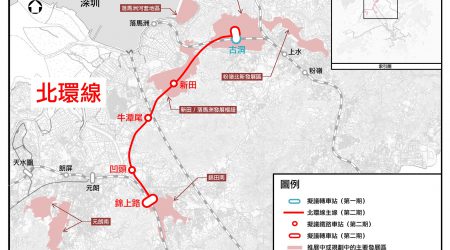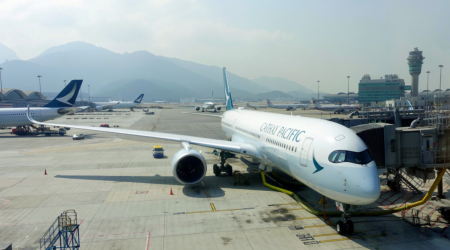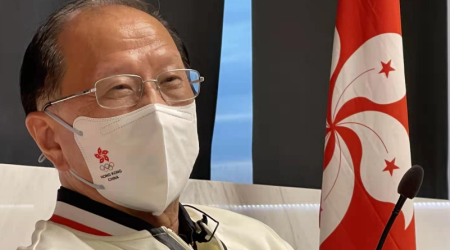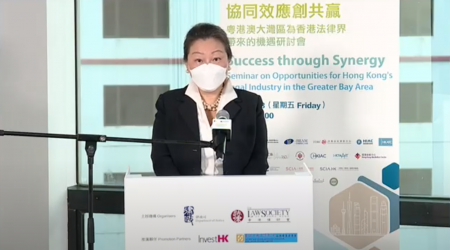刘光源特派员在《南华早报》发表署名文章《决不能允许阵营对抗和冲突动荡在亚洲重演》
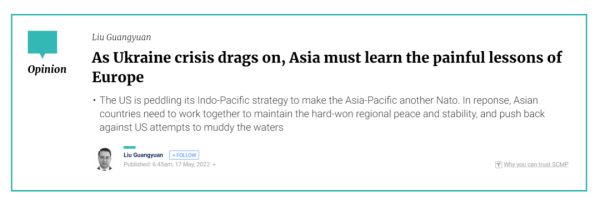
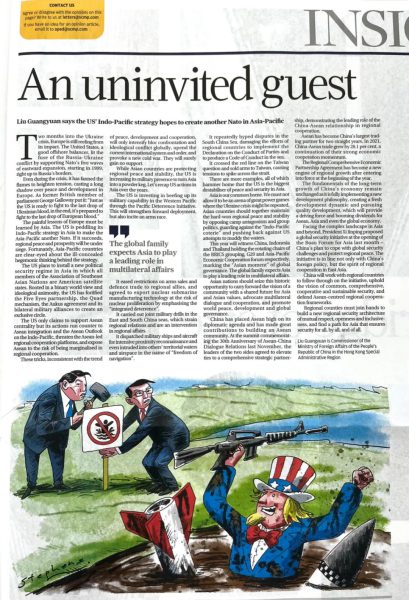
乌克兰危机爆发两个多月来,已经把欧洲搞得一团糟。个别域外大国在欧洲实施离岸制衡,主导北约五轮东扩,对俄罗斯极限施压,点燃俄乌冲突的导火索,还屡次三番火上烧油,挑动冲突不断升级,给欧洲和平与发展蒙上巨大阴影。正如英国一位前议员所说,个别大国“准备好让乌克兰战斗到最后一滴血,最终它也准备好让欧洲流尽最后一滴血”。
欧洲在乌克兰危机中的惨痛教训对亚洲国家具有重要启示意义。在亚洲,搞乱欧洲的个别大国正加紧推进“印太战略”,企图拼凑“亚太版北约”,冲击地区和平稳定与发展繁荣。对“印太战略”的种种伪装和严重危害,地区国家眼明心亮。
个别大国企图在本地区另搞一套政治安全体系,将东盟置于从属地位。抱守零和博弈的冷战思维,以意识形态划线,排出“五四三二”阵型,强化“五眼联盟”,做实“四边机制”,拼凑三边安全伙伴关系,收紧双边军事同盟,打造封闭排他的“小圈子”。这些举动违背东盟地区一体化愿景,直接冲击东盟主导的区域合作平台,与东盟印太展望的宗旨背道而驰,使东盟在区域合作架构中面临被边缘化风险,充分暴露出个别大国只是把东盟中心地位挂在嘴边、从来没真正放在心上。这种制造集团对抗、撕裂现行国际体系和秩序的行径,与西方海洋霸权主义一脉相承,意在加剧全球意识形态对抗,挑起“新冷战”,严重违背和平、发展、合作的时代潮流,注定不得人心。
个别大国无视地区国家维护和平稳定的努力,通过不断强化军事部署把地区变成“火药桶”。实施“太平洋威慑倡议”,向西太地区增派兵力和先进武器,加强前沿部署和军事对抗,挑动军备竞赛。强调“一体化威慑”概念,在武器出售、防务贸易等方面向地区盟友大幅放宽限制,甚至不惜冒着核扩散风险输出核潜艇制造技术,还频频在东海、南海等地区开展大规模海上联合军演,制造地区紧张局势,借机介入地区事务。派遣军用舰机以“航行自由”名义对地区国家开展密集的抵近侦察活动,甚至擅闯他国领海领空,蓄意进行军事挑衅。反复炒作南海争议,干扰破坏地区国家落实《南海各方行为宣言》和“南海行为准则”磋商进程。在台湾问题上故意“踩红线”,多次对台军售,挑动两岸对立对抗。可以说,个别大国就是亚洲和平安全的最大不稳定源。
亚洲是我们的共同家园,我们决不能允许乌克兰危机一幕在本地区重演,决不能让亚洲成为大国博弈的角斗场。地区国家应共同反对阵营对抗和集团政治,坚决抵制“印太小圈子”,阻止个别大国在我们周边挑事生乱,共同维护好来之不易的地区和平稳定局面。
今年中国、印尼、泰国将分别担任金砖国家、二十国集团、亚太经合组织轮值主席国,全球治理进入“亚洲时刻”,国际社会期待亚洲为此发挥引领作用。亚洲国家应抓住这一历史契机,弘扬亚洲命运共同体理念和亚洲价值观,把握多边对话合作方向,为促进世界和平发展、降低全球治理赤字作出亚洲贡献。
中国始终把东盟作为外交优先方向,为东盟共同体建设和地位实质性提升作出巨大贡献。在去年11月中国—东盟建立对话关系30周年峰会上,双方领导人共同宣布建立全面战略伙伴关系,再次彰显中国—东盟关系在区域合作中的引领作用。2021年中国—东盟贸易额逆势上扬,同比增长28.1%,延续经贸合作强劲势头,东盟连续两年成为中国第一大贸易伙伴。《区域全面经济伙伴关系协定》今年初正式生效实施,成为地区经济增长的新引擎。中国经济长期向好的基本面不会改变,我们正全面贯彻新发展理念,加快构建新发展格局,着力推动高质量发展,将给东盟、亚洲乃至全球经济企稳复苏提供强大动能,带来更多发展机遇和红利。
面对纷繁复杂的国际形势和地区格局,习近平主席在上个月博鳌亚洲论坛2022年年会开幕式上提出全球安全倡议,为应对国际安全挑战提供了中国方案,为维护地区和平安宁贡献了中国智慧。这一倡议不仅基于中国一贯的外交政策理念,也充分吸收了东亚区域合作精神的精髓。中国愿与地区国家共同全面落实全球安全倡议,坚持共同、综合、合作、可持续的安全观,坚定维护以东盟为中心的区域合作架构,继续推动深化地区安全合作,携手构建相互尊重、开放包容的地区安全新架构,走出一条共建共享共赢的亚洲安全之路。
Two months into the Ukraine crisis, Europe is still reeling from its impact. The United States, a good offshore balancer, lit the fuse of the Russia-Ukraine conflict by supporting Nato’s five waves of eastward expansion, starting in 1999, right up to Russia’s borders.
Even during the crisis, it has fanned the flames to heighten tension, casting a long shadow over peace and development in Europe. As former British member of parliament George Galloway put it: “Just as the US is ready to fight to the last drop of Ukrainian blood, in the end, it’s prepared to fight to the last drop of European blood.”
The painful lessons of Europe must be learned by Asia. The US is peddling its “Indo-Pacific strategy” in Asia to make the Asia-Pacific another Nato. If it succeeds, regional peace and prosperity will be under siege. Fortunately, Asia-Pacific countries are clear-eyed about the ill-concealed hegemonic thinking behind the strategy.
The US plans to install a new political security regime in Asia in which all members of the Association of Southeast Asian Nations are American satellite states. Rooted in a binary world view and ideological animosity, the US has fortified the Five Eyes partnership, the Quad mechanism, the Aukus agreement and its bilateral military alliances to create an exclusive circle.
The US only claims to support Asean centrality but its actions run counter to Asean integration and the Asean Outlook on the Indo-Pacific, threaten the Asean-led regional cooperation platforms, and expose Asean to the risk of being marginalised in regional cooperation.
These tricks, inconsistent with the trend of peace, development and cooperation, will only intensify bloc confrontation and ideological conflict globally, upend the current international system and order, and provoke a new “cold war”. They will surely gain no support.
While Asian countries are protecting regional peace and stability, the US is increasing its military presence to turn Asia into a powder keg. Let’s recap US actions in Asia over the years.
The US is investing in beefing up its military capability in the Western Pacific through the Pacific Deterrence Initiative. This will strengthen forward deployment, but also incite an arms race.
It eased restrictions on arms sales and defence trade to regional allies, and agreed to export nuclear submarine manufacturing technology at the risk of nuclear proliferation by emphasising the “integrated deterrence”.
It carried out joint military drills in the East and South China seas, which strain regional relations and are an intervention in regional affairs.
It dispatched military ships and aircraft for intensive proximity reconnaissance and even intruded into others’ territorial waters and airspace in the name of “freedom of navigation”.
It repeatedly hyped disputes in the South China Sea, damaging the efforts of regional countries to implement the Declaration on the Conduct of Parties and to produce a Code of Conduct in the sea.
It crossed the red line on the Taiwan question and sold arms to Taiwan, causing tensions to spike across the strait.
There are more examples on this list, all of which hammer home that the US is the biggest destabiliser of peace and security in Asia.
Asia is our common home. We must not allow it to be an arena of great power games where the Ukraine crisis might be repeated. Asian countries should together maintain the hard-won regional peace and stability by opposing camp antagonism and group politics, guarding against the “Indo-Pacific coterie” and pushing back against US attempts to muddy the waters.
This year will witness China, Indonesia and Thailand holding the rotating chairs of the BRICS grouping, G20 and Asia-Pacific Economic Cooperation forum respectively, marking the “Asian moment” of global governance. The global family expects Asia to play a leading role in multilateral affairs.
Asian countries should seize this historic opportunity to carry forward the vision of a community with a shared future for Asia and Asian values, advocate multilateral dialogue and cooperation, and promote world peace, development and global governance.
China has placed Asean high on its diplomatic agenda and has made great contributions to building an Asean community. At the summit commemorating the 30th Anniversary of Asean-China Dialogue Relations last November, the leaders of the two sides agreed to elevate ties to a comprehensive strategic partnership, demonstrating the leading role of the China-Asean relationship in regional cooperation.
Asean has become China’s largest trading partner for two straight years. In 2021, China-Asean trade grew by 28.1 per cent, a continuation of their strong economic cooperation momentum.
The Regional Comprehensive Economic Partnership Agreement has become a new engine of regional growth after entering into force at the beginning of the year.
The fundamentals of the long-term growth of China’s economy remain unchanged as China is fully implementing a new development philosophy, creating a fresh development dynamic, and pursuing quality development, which will provide a robust driving force and booming dividends for Asean, Asia and even the global economy.
Facing the complex landscape in Asia and beyond, President Xi Jinping proposed a global security initiative at the opening of the Boao Forum for Asia last month – China’s plan to cope with global security challenges and protect regional peace. The initiative is in line not only with China’s foreign policy, but the spirit of regional cooperation in East Asia.
China will work with regional countries to follow through on the initiative, uphold the vision of common, comprehensive, cooperative and sustainable security, and defend Asean-centred regional cooperation frameworks.
Regional counties must join hands to build a new regional security architecture of mutual respect, openness and inclusiveness, and find a path for Asia that ensures security for all, by all, and of all.





